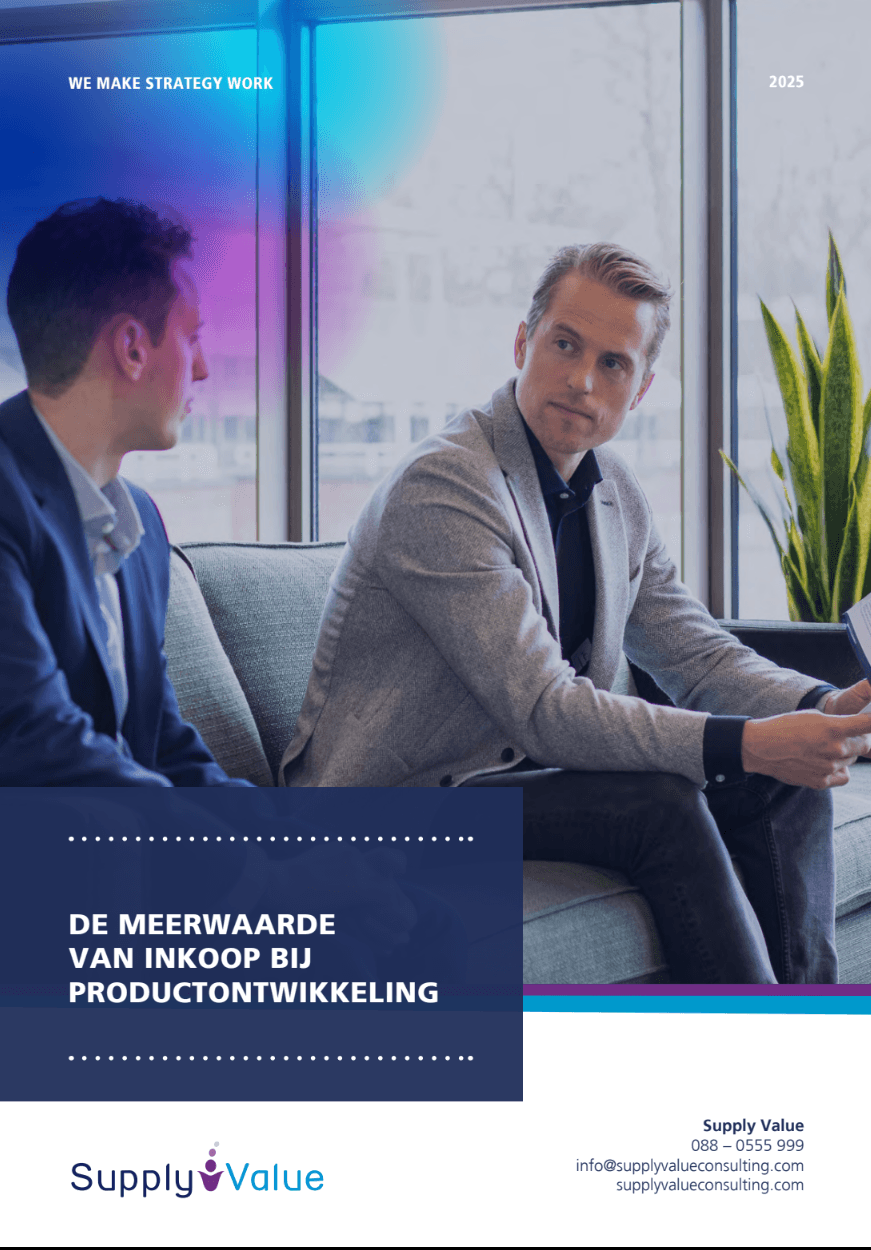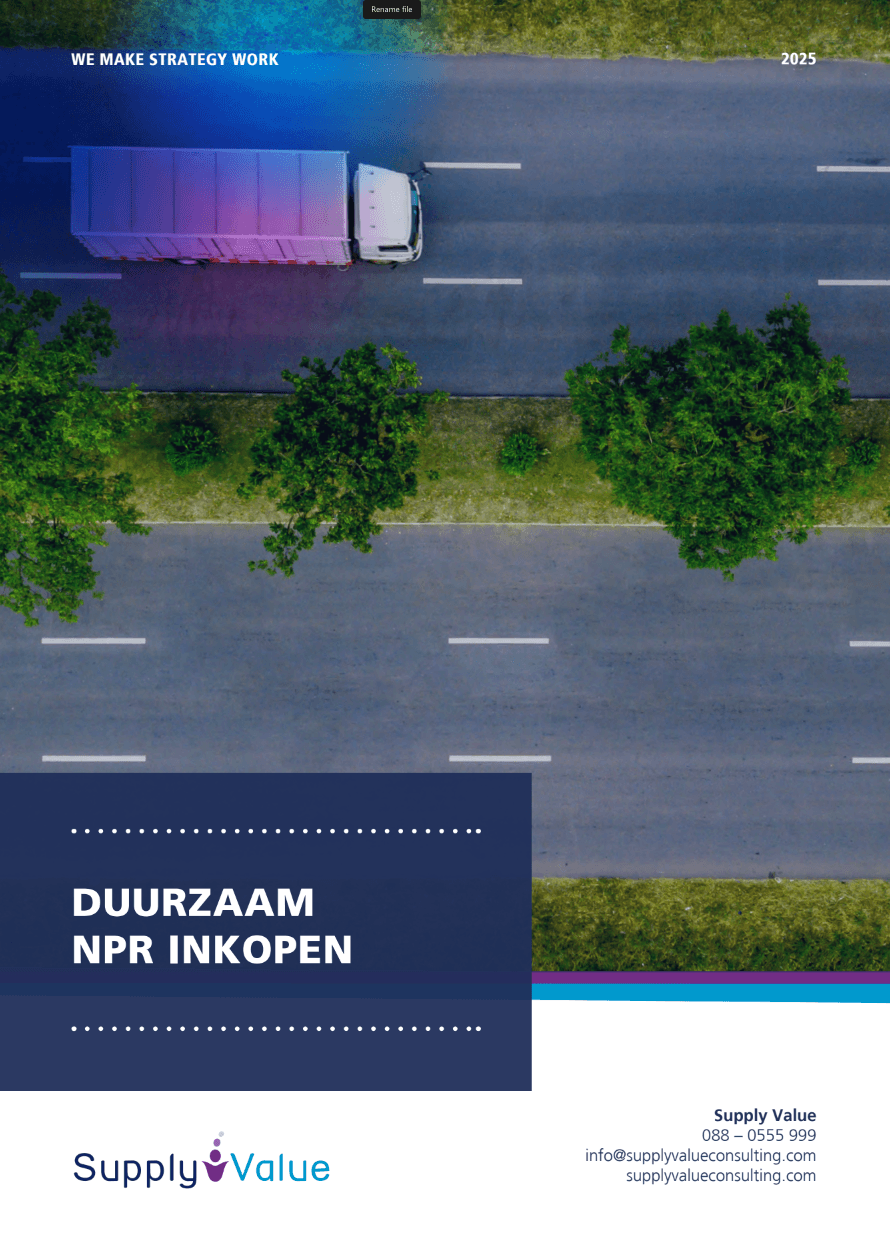For this interview, we speak with Royan van Velse, Manager of Procurement and Facilities at PreZero Netherlands and also a lecturer in Procurement at the University of Arnhem and Nijmegen (HAN).
PreZero is an international environmental service provider that works in 11 countries with over 30,000 employees to close cycles, with the aim of saving the use of new raw materials. PreZero is part of the Schwarz Group, one of the leading retail companies in Europe. The Schwarz Group controls all stages of the cycle: from production and retail to waste and recycling management.
In the Netherlands, PreZero works with 2,100 employees at 55 branches for 85,000 customers across the country.
“To get a good picture of your procurement organization in the Netherlands, what do you as the procurement department of PreZero Netherlands actually purchase?”
As the procurement department of PreZero Netherlands, we purchase all indirect spend. This ranges from coffee cups and coffee, IT contracts, trucks and containers to incinerators and associated maintenance. The procurement department is thereby divided into a number of categories, such as facilities, HR (temporary workers and other forms of interim labor) and installations.
When we do technical procurement, we always use a trinity, a project leader, a buyer and a technical content expert. Depending on the project, we expand this further. In the case of very specific installations that are not built annually, we hire additional expertise in that area. We do not purchase waste as a purchasing department. We have a separate department for that.
“From our Procurement Trends Survey ‘procurement aligned with business and strategy‘ emerges as the number one trend for 2024. However, for parties in the industry, which we include you among, we see another number one trend, which is ‘realizing cost savings.’ Is that recognizable to you?”
Certainly, this is recognizable within the industry but also with us. In addition, we as PreZero are in an industry where it takes a long time for investments to pay for themselves, such as, for example, the plans for the construction of a heat and CO2 capture plant in Roosendaal that is now being worked out. This installation can be used to capture heat and C02 released during the incineration of waste that cannot be recycled. The captured heat is then transported via a heat network directly to market gardeners in the area. That kind of investment has a different dynamic than simply selling products. I also recognize the alignment of procurement with business and strategy, which I see particularly at the international level.
“Among the procurement trends among all respondents, we see ‘partnering with suppliers‘ at number two and ‘contract management‘ in third place. Are these trends also important to you?”
In terms of contract management, we would like to make further strides. This also has to do with priority and capacity. These steps involve monitoring and safeguarding agreements made. I think this is a prerequisite for entering into more partnerships with suppliers. We do organize an annual supplier day, where we invite our most important suppliers to and in cooperation with the HAN and we talk about sustainable procurement (policy) in particular. We do this to understand each other better and join forces.
“Nice initiative! How high is the importance of sustainable procurement within your procurement organization, and in what ways does it manifest itself?”
Besides the fact that sustainability is a high priority at PreZero, we see it is also increasingly higher on the agenda with customers. The sustainability requirements within the procurement processes of (potential) customers are becoming increasingly stricter. This shows that higher internal sustainability standards also simply provide a strategic competitive advantage. Ultimately, this has a direct positive impact on our sales.
“Despite this positive trend, we see something striking in our survey. If we look at sustainability as a procurement trend it ranks 6th among all respondents combined, but within the industry, it drops to 11th. Do you recognize this within your sector?”
I notice that sometimes the less sustainable solution is still chosen, for various reasons. This can be from a cost perspective, but also because the customer’s needs do not fit the more sustainable solution. You do see that when the market forces us and other organizations to be more sustainable, people wake up and take action. Requirements from procurement parties do get the market moving. But our supplier days, where we really get together with suppliers to see how we can make their products more sustainable, are also enormously successful. We try to use suppliers’ knowledge of their own products as much as possible to make our own chain more sustainable.
“How does the supplier market respond to these initiatives? And how do you find suppliers who are open to this and want to cooperate?”
Actually, very well. We have been running this initiative for about 4 years now. The reason for this was that we, from PreZero, wanted to make our chain more sustainable, but did not always know how best to do this for each product (group). We really needed our suppliers for that. During those sessions, we let the suppliers come up with ideas. For those ideas, I use an ABC Methodology: Aftasten (Scan), Beoordelen (Assess) and Contracteren (Contract). For Scanning, we simply try and test new ideas. Then, we Assess their performance and check to see if they achieved the desired result. Based on that assessment, we verify and Contract the performance. We do not try to impose this unilaterally on suppliers, but collectively see what is feasible.
“So with this, you actually achieve a win-win? Because in addition to making your own chain more sustainable, you also build much more toward a partnership with these suppliers?”
Definitely! In addition, it also contributes to continuity. We build a relationship of trust with these parties and we know what we can expect from each other. If any problems arise (for example, during an installation), I can call them and they are there for us immediately. These are then products and services that are in the upper right-hand corner of the strategic quadrant in a Kraljic analysis. I think this kind of partnership is hugely important for us.
“In our previous Procurement Trends Survey in 2022 ‘creating transparent supply chains‘ ranked very high. However, in the 2024 survey, we observed the biggest drop in this aspect. Despite the ongoing impact of COVID-19 during the previous survey, we find this decline notable, especially with Corporate Sustainability and Responsibility Directive (CSRD) regulations looming on the horizon. How important is supply chain insight to your organization?”
This remains a challenge. I don’t think we have complete visibility of our chain in every area either. In addition to the CSRD, there are now, of course, all kinds of tools and resources that can help make your chain transparent. The disadvantage is that by now there are already a large number of tools. This in turn creates workload for suppliers, who have to submit a lot of data or be audited for each tool. The standardization of available information in one central location would of course help enormously, but I fear that this is difficult to achieve for the time being.
“What is your concluding advice for organizations in the area of more sustainable procurement?”
Try to really tackle the sustainability of (your suppliers’) products together with your suppliers and not simply impose it on them. Talk to your suppliers and explain why this is important to you and where your challenges lie. Then together you can get the most value out of it.



